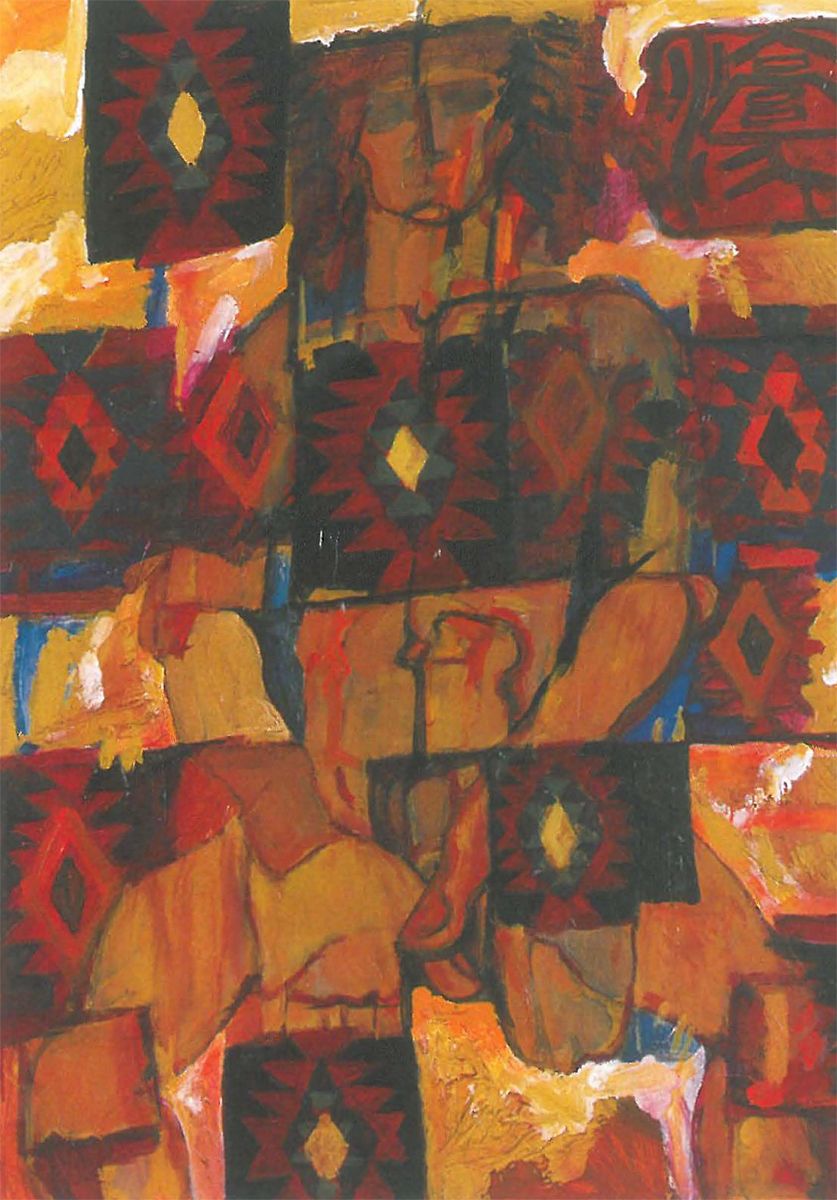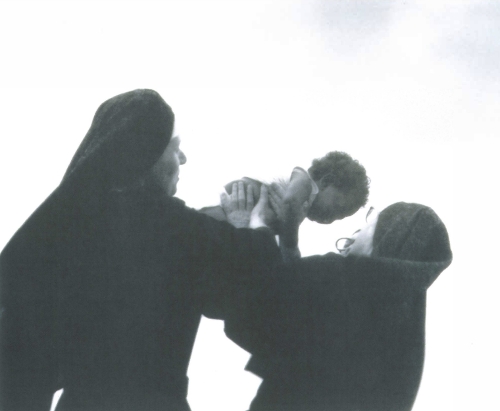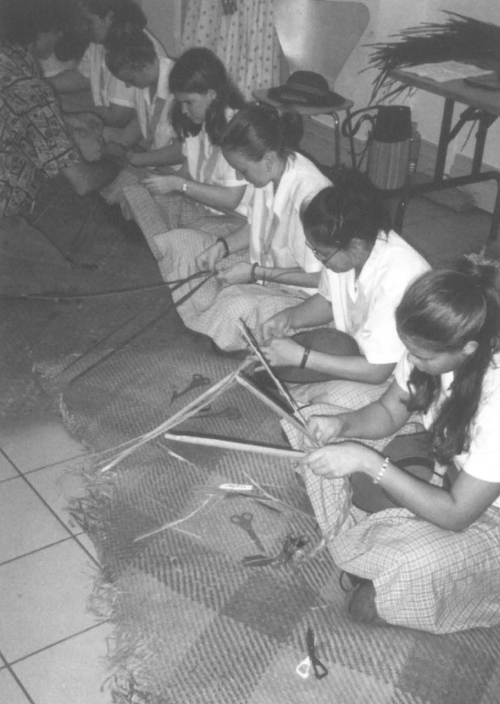
In self portrait 2000 there is a face painted in a frame surrounded by ambiguous markings which frame the frame. When does an artist paint a self-portrait? It could be said that it is in a liminal period; that moment between moments when perhaps doubt is confronted by looking in a mirror hoping to find a window.
This image by Geoffrey Goldie was painted as he approached his 79th year. It is perhaps more an autobiography in that it contains references which map a journey of the artist in his maturing years. A survey show begins at age 46, and soon Mr Goldie began travelling seriously. The painting's marginalia, markings of a journey which suggest the punctuations of memory, has a light source which rests within the viewer whilst the inner portrait suggests a time of day when the sun produces high contrast. A meeting of the metaphysical with the physical is a motif within all of his work as is the swaying transition between the erotic and the homoerotic. The artist has seen and been touched by great wonders of the world and recently has been influenced by the handling of paint from a younger Australian artist resident in Berlin. A fusion of traditions is a major source of inspiration in travel notation. In his 78th year the artist travelled to China and later that same year to Germany. Contact with surface textures produced a tactile brush stroke calculated as an under-finish of a high risk nature. Other images throughout the paintings suggest that the artist sees himself as a custodian of tonalism; his signature is of the western gaze.
The drawings are mostly of the naked body simple and elegant in execution. This artist was a master with line at an early age. His shift to the gestural brush stroke, replacing pen and ink, is more about an expression of the artist as a body; again, in search of a window; sketches of time when one works with and against instinct.

In the 80s, an interest in etching provided a vehicle to extend the artist's knowledge of Hindu iconography as well as returning to his own entry into art through the printing trade where he began as a graphic artist in 1946. It was also in the 80s that he was perfecting his art of set and costume designs for the Bharatam Dance Company. As works in themselves these gouache sketches show a loosening up of style, rhythmic and decorative, as inventive in interpretation as is the dance itself. The challenge to capture movement in still frame produce a series of vivacious and colourful images. The etchings, however, were determined by strict control of a counter-process.
Goldie has managed to bypass the mainstream artworld's notice. It has been a conscious choice. In the privacy of his life he has been successful in surviving as an artist still inquiring into the nature of his own production; a culture within a culture. This exhibition is rich and varied, carefully hung with sensible edits. The gallery space reflects a pioneering spirit.
The works juggle states of rest in varying degrees. Were one to name whatever it is that he is a pioneer of, the term fusionism comes to mind but how can this fusionism be named when so much of what it contains is about the nameless? An old question which repeats without an answer. Perhaps a retrospective, a longer article would entice the voice within the work to speak more loudly but in quiet spaces there is modesty...












